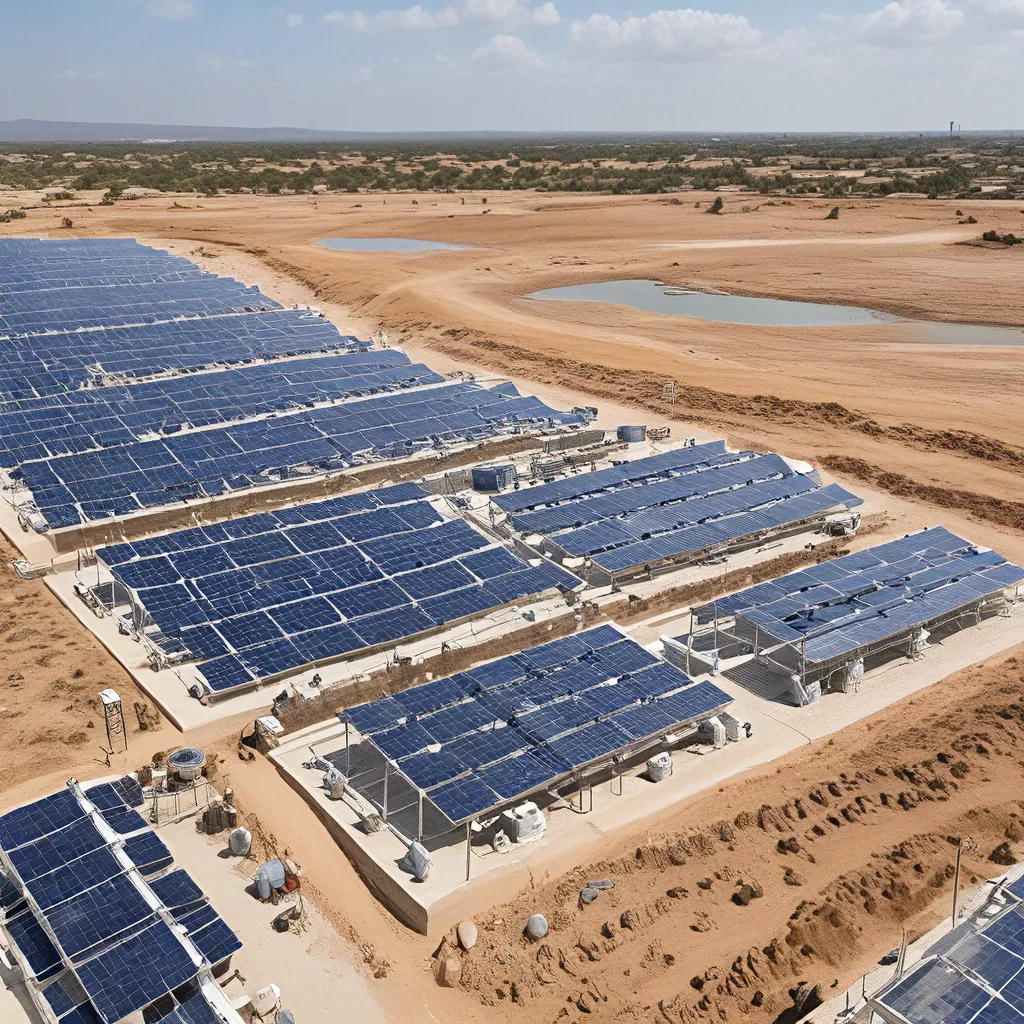
Imagine a world where the sun’s rays not only power our homes and businesses but also sustain life’s most precious resource – water. As our planet grapples with the dual challenges of climate change and dwindling water supplies, the need for innovative solutions has never been more urgent. Enter solar energy – a beacon of hope in the search for water conservation.
The Power of Solar in Water Conservation
Let’s dive into the fascinating intersection of solar power and water conservation, and explore how harnessing the sun’s energy can pave the way for a greener, more water-secure future.
The sun holds infinite power waiting to be harnessed. But beyond simply powering our homes and gadgets, solar energy offers a solution to one of humanity’s most pressing concerns: water scarcity. With growing populations, urbanization, and changing weather patterns, freshwater sources are under increasing strain. This is where solar energy comes in – by leveraging solar power, we can revolutionize how we manage and conserve our water resources.
The beauty of solar-powered water conservation lies in its dual benefits. Not only does it help safeguard our water resources, but it also lessens the environmental impact of traditional water management practices. By reducing reliance on fossil fuels and minimizing greenhouse gas emissions, solar energy contributes to a healthier planet and a more sustainable future for generations to come.
Solar-Powered Desalination: A Lifeline for Coastal Communities
One of the most promising applications of solar energy in water conservation is solar-powered desalination. Desalination plants use the sun’s heat to turn seawater into freshwater, offering a lifeline to coastal communities facing water shortages.
According to Earth.org, desalination plants worldwide treat seawater and wastewater to eliminate salt and contaminants, delivering drinking water to millions. However, these plants tend to operate on a lot of power, prompting researchers to look for ways to improve energy efficiency.
Enter the innovative work of a research team from the Massachusetts Institute of Technology (MIT) and Shanghai Jiao Tong University in China. They have developed a cost-effective and promising solar-powered desalination device that could provide a family with potable drinking water for as little as $4 per day. This breakthrough technology overcomes the challenge of salt accumulation, which has long been an obstacle to efficient desalination.
Harnessing the Sun’s Power for Sustainable Irrigation
Solar energy’s role in water conservation extends beyond desalination. Solar-powered irrigation systems are another shining example of how the sun’s power can be harnessed to address water scarcity challenges.
According to 8MSolar, the Solar Energy Corporation of India (SECI) has launched the KUSUM scheme, which promotes solar-powered irrigation for farmers. By subsidizing solar pump installations, the scheme aims to reduce groundwater depletion and promote sustainable agriculture practices across India.
Imagine a farmer in a remote village, no longer reliant on unreliable and costly diesel generators to power their irrigation system. Instead, they can harness the sun’s energy to efficiently water their crops, reducing water waste and increasing agricultural productivity. This not only benefits the farmer’s livelihood but also contributes to the broader goal of water conservation and environmental sustainability.
Wastewater Treatment: The Solar-Powered Cleanup Crew
The sun’s power isn’t just limited to irrigation and desalination – it’s also transforming the way we manage wastewater treatment. Take the example of the City of Sunnyvale, California, which installed a solar photovoltaic (PV) system at its wastewater treatment plant to offset electricity consumption and reduce operating costs.
By generating clean energy to power the treatment processes, this solar-powered solution contributes to water conservation efforts and environmental sustainability in the region. It’s a testament to the versatility of solar energy and its ability to address various water management challenges.
Overcoming Challenges, Embracing a Brighter Future
While the benefits of solar-powered water conservation are evident, there are still some challenges that need to be addressed. The initial costs of implementing solar infrastructure can be prohibitive, particularly for resource-constrained communities and governments. Additionally, there are technological barriers that require continued innovation to improve the efficiency, reliability, and scalability of solar-powered water management solutions.
But the future looks bright. Ongoing research and innovations are poised to overcome these challenges and unlock the full potential of solar energy for water conservation. From advancements in photovoltaic and solar thermal technologies to innovative financing mechanisms and policy interventions, the path to a more water-secure future is paved with the sun’s rays.
Embracing the Solar-Powered Revolution
As we stand at the dawn of a new era of renewable energy, the potential of solar-powered water conservation knows no bounds. From remote villages in developing countries to bustling cities, the sun’s rays offer a ray of hope in the fight against water scarcity.
By embracing solar energy solutions and advocating for sustainable water management practices, we can collectively work towards a more resilient, equitable, and sustainable future for all. As the team at Plug & Save Energy Products likes to say, “the future is bright, and it’s powered by the sun.”
So, let’s join forces, harness the power of the sun, and unlock a brighter, more water-secure tomorrow for generations to come. The time to act is now, and the solutions are shining brighter than ever before.